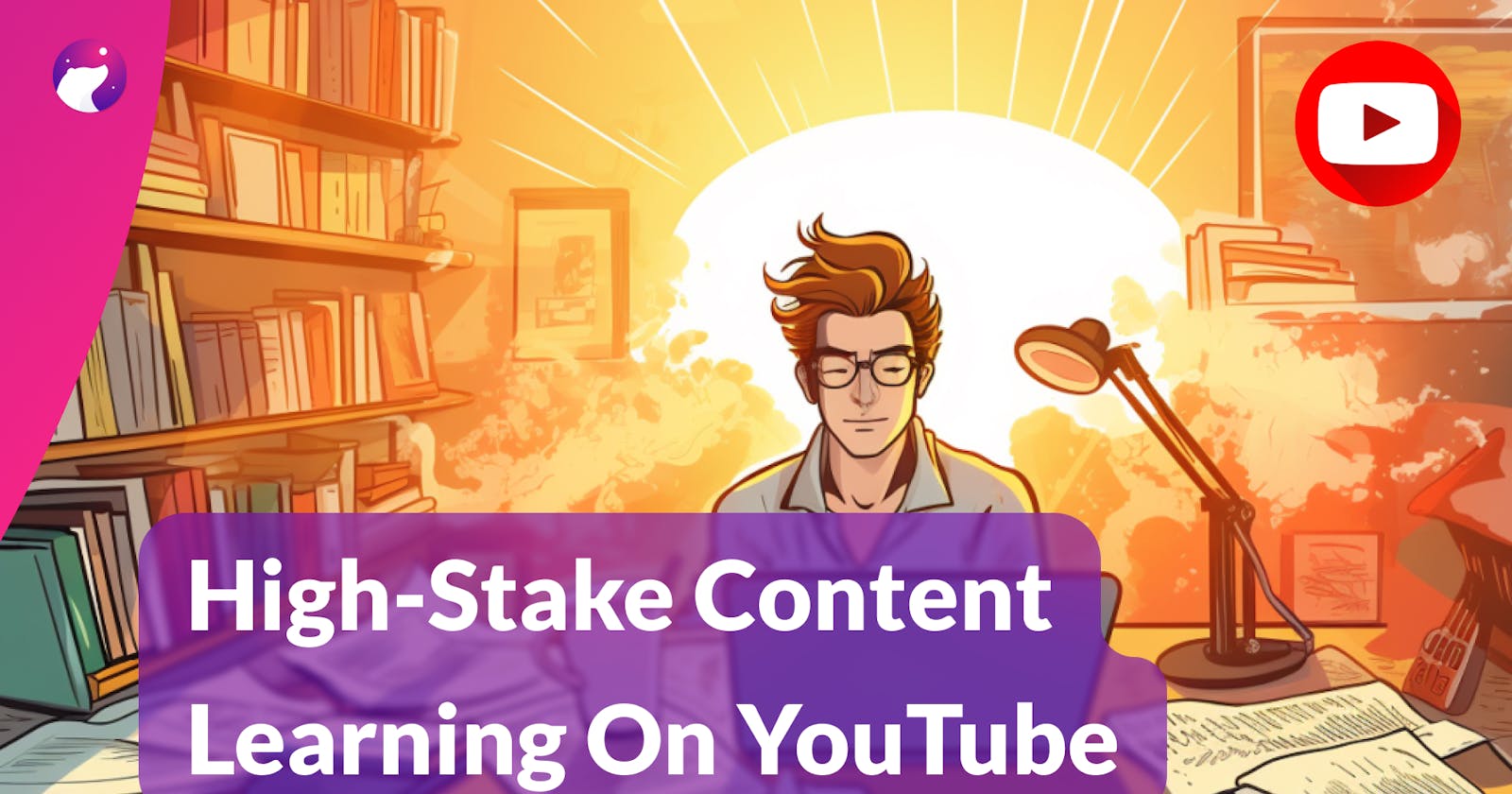High-stake videos on YouTube
We all love YouTube, don't we? It's an incredible platform for learning new things, being entertained, and even for picking up new hobbies. Today, I want to share my latest approach for learning high-stake content on YouTube. Exciting, right? Let's dive in.
So, how do I differentiate between high-stake and low-stake content? It's simple. I categorize it based on its value to me.
For instance, we all watch entertaining videos, read fun articles, and once we're done with them, that's it, right? But then, there are some contents that impart useful information or inspire us, which we might want to revisit later. Think of it as watching a cooking video; you'll want to try it later, right? That's what I call useful content.
To be more precise, I divide these useful contents into high-stake and low-stake. High-stake content has the potential to bring profound or fundamental changes to my work or lifestyle. If I pick up a new design process technique that can enhance my work and benefit my career, that's high-stake content.
On the other hand, the cooking video example I mentioned earlier? While it's useful, it's not exactly life-changing. So, I categorize it as low-stake content.
Tools: FigJam, ChatGPT and
Today, I want to share my approach to consuming high-stake content and how I ensure I remember everything I learn. Given the value of high-stake content, it's worth spending extra time on note-taking. To do this effectively, I use three tools - FigJam, ChatGPT, and sometimes FreeForm app on Mac and iOS.
How it works
The method is pretty straightforward. First, I consume the content, then I use AI - ChatGPT, to be exact, to analyze and help me clarify my notes. In essence, I'm co-piloting with an AI.
One fundamental rule I adhere to is making everything visual. I'm a visual learner, and I find that when I see graphical images and quotes all in one place, it becomes much easier to absorb the information from the content.
I then use Notion to combine all my learning into a consolidated, searchable learning note page. All the tools I use are free, except perhaps if you're using GPT-4 for analyzing content, but GPT-3.5 works just fine as well.
Now, let's dive deeper into how I do this (please check the video for this step)
YouTube上的高风险视频
我们都喜欢YouTube,不是吗?它是一个学习新事物、娱乐甚至学习新爱好的不可思议的平台。今天,我想分享一下我最新的学习高风险YouTube内容的方法。很刺激,对吧?让我们深入了解一下。
那么,我如何区分高风险和低风险内容呢?很简单。我根据对我的价值进行分类。
例如,我们都观看有趣的视频、阅读有趣的文章,一旦我们完成了它们,就没有了,对吧?但是,有些内容会传授有用的信息或启发我们,我们可能会稍后想要重新访问它们。想象一下观看烹饪视频;你会想以后试试做吧?这就是我所谓的有用内容。
更准确地说,我将这些有用的内容分为高风险和低风险。高风险内容有可能给我的工作或生活带来深刻或根本性的变化。如果我学会了一种可以增强我的工作并有益于我的职业生涯的新设计过程技术,那就是高风险内容。
另一方面,我之前提到的烹饪视频的例子?虽然它很有用,但并不是非常重要。因此,我将其分类为低风险内容。
工具:FigJam、ChatGPT和Freeform
今天,我想分享一下我的高风险内容消费方法以及如何确保我记住我学到的一切。考虑到高风险内容的价值,值得花费额外的时间来做笔记。为了有效地做到这一点,我使用了三个工具——FigJam、ChatGPT,有时也会使用Mac和iOS上的FreeForm应用程序。
它是如何工作的
这种方法非常简单。首先,我消费内容,然后使用AI——确切地说是ChatGPT来分析和帮助我澄清笔记。实质上,我在与AI共同驾驶。
我遵循的一个基本规则是使一切可视化。我是一个视觉学习者,我发现当我看到图形图像和引用都在一个地方时,从内容吸收信息变得更加容易。
然后,我使用Notion将所有学习内容合并到一个可搜索的学习笔记页面中。我使用的所有工具都是免费的,除非您使用GPT-4来分析内容,但GPT-3.5也可以。
现在,让我们深入了解我如何做到这一点(请查看视频)。

